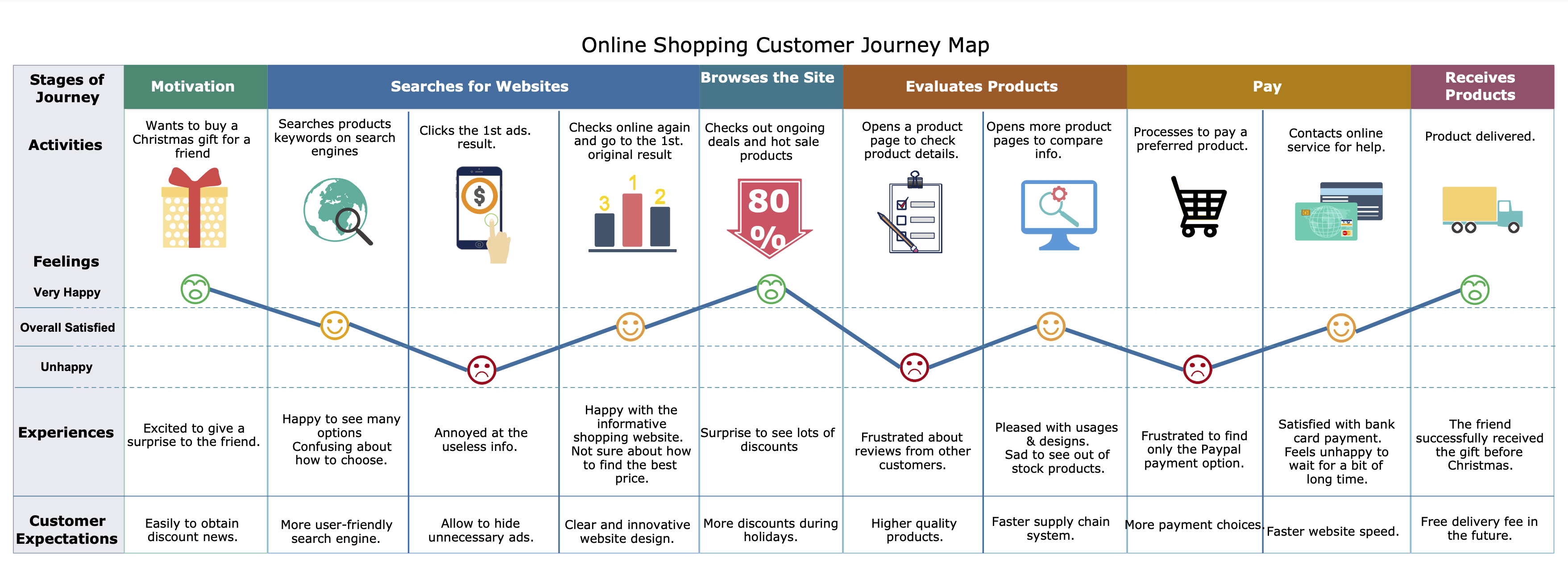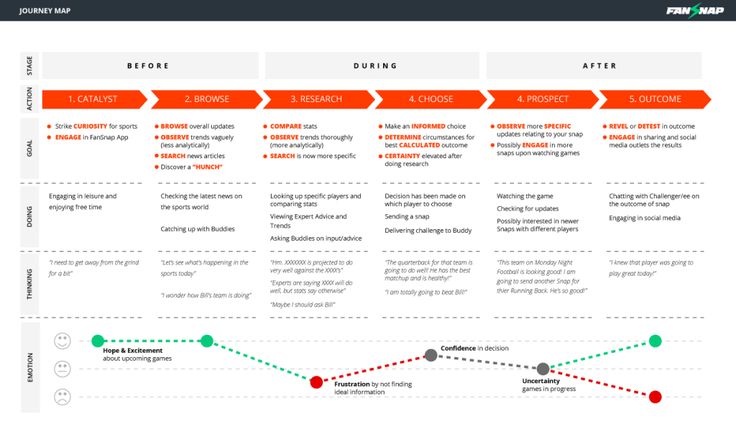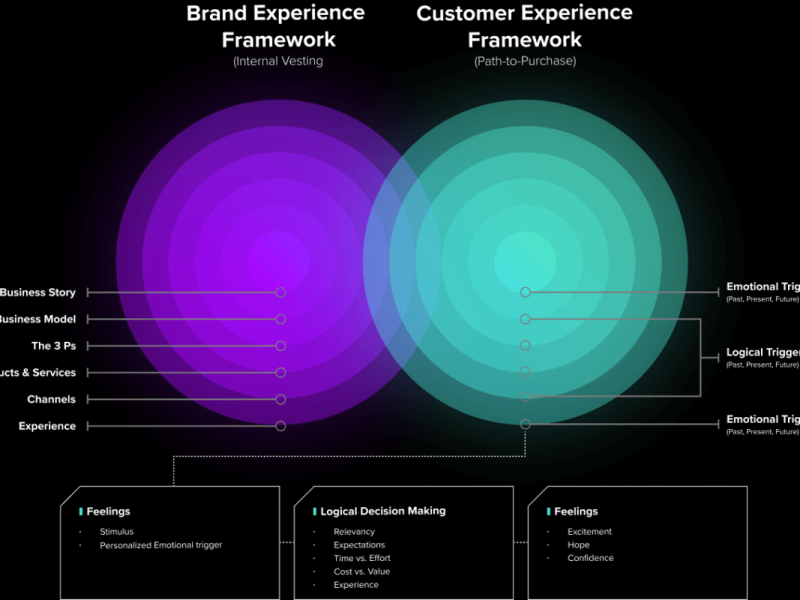A Comprehensive Guide to Customer Journey
In today’s competitive business landscape, understanding the customer journey is crucial for creating meaningful connections with your audience.
But what exactly is a customer journey? At its core, a customer journey is the path a customer takes from first becoming aware of a product or service to making a purchase and ultimately becoming a loyal advocate for the brand.
This journey consists of several stages, each offering businesses unique opportunities to engage, delight, and retain customers.
Stages of the Customer Journey
Let’s delve into the key stages of the customer journey and explore strategies businesses can employ at each stage.
1. Awareness
The awareness stage marks the moment a potential customer first learns about your product or service. This could happen through various channels, such as search engines, social media, advertisements, or word-of-mouth recommendations. At this stage, the goal is to create a positive first impression and capture the audience’s attention.
Strategies for the Awareness Stage:
- Effective Branding: Develop a strong brand identity that resonates with your target audience.
- Engaging Content: Utilize blog posts, videos, and infographics to inform and attract potential customers.
- SEO Optimization: Ensure your website ranks high on search engine results pages by using relevant keywords.
- Targeted Advertising: Use tools like Google Ads or social media advertising to reach specific demographics.
2. Consideration
In this stage, potential customers evaluate different options to address their needs. They compare products, read reviews, and seek out detailed information.
Strategies for the Consideration Stage:
- Detailed Product Information: Offer clear descriptions, specifications, and benefits.
- Customer Testimonials: Showcase reviews and case studies to build trust.
- Interactive Tools: Provide comparison charts, calculators, or virtual demos to help customers make informed decisions.
3. Decision
The decision stage is when customers choose to make a purchase. Here, your focus should be on minimizing friction and creating a seamless buying experience.
Strategies for the Decision Stage:
- User-Friendly Website: Ensure your site is easy to navigate, with a straightforward checkout process.
- Multiple Payment Options: Cater to diverse preferences by offering credit card payments, digital wallets, or installment plans.
- Limited-Time Offers: Use discounts or promotions to encourage immediate action.
4. Post-Purchase
The customer journey doesn’t end with a purchase. In the post-purchase stage, businesses have an opportunity to nurture loyalty and turn one-time buyers into repeat customers.
Strategies for the Post-Purchase Stage:
- Excellent Customer Support: Provide timely and effective assistance.
- Follow-Up Communication: Send thank-you emails, satisfaction surveys, or product care tips.
- Loyalty Programs: Offer rewards, discounts, or exclusive deals to encourage repeat business.
Best Practices for Optimizing the Customer Journey
To create a seamless and engaging customer journey, consider these best practices:
- Identify Key Touchpoints: Map out all the points where customers interact with your brand, such as your website, social media channels, or customer service.
- Ensure Omnichannel Consistency: Provide a cohesive experience across all platforms, allowing customers to transition smoothly between channels.
- Personalize Interactions: Use data-driven insights to deliver tailored messages and offers that resonate with individual preferences.
- Leverage Customer Feedback: Regularly collect and analyze feedback to identify pain points and areas for improvement.
- Track Metrics: Monitor key performance indicators (KPIs) such as conversion rates, customer satisfaction scores, and retention rates to gauge the effectiveness of your customer journey.
Common Mistakes in Customer Journey Mapping
Avoid these pitfalls to ensure an effective customer journey:
- Ignoring the Customer’s Perspective: Always design your journey with the customer’s needs and expectations in mind.
- Neglecting Feedback: Dismissing customer insights can lead to missed opportunities for improvement.
- Inconsistent Experience Across Channels: Ensure your brand voice, visuals, and messaging align across all platforms.
- Lack of Personalization: Failing to customize the experience can result in generic interactions that fail to engage.
- Not Measuring Success: Without tracking metrics, it’s impossible to know what’s working and what isn’t.
Real-World Examples of Customer Journeys
- Electronics Purchase:
- Awareness: A customer sees an ad for a TV sale.
- Consideration: They visit the store’s website to compare prices and read reviews.
- Decision: They purchase the TV online or in-store.
- Post-Purchase: They receive a thank-you email with setup tips.
- Travel Booking:
- Awareness: A traveler discovers a travel website through social media.
- Consideration: They compare flight and hotel options.
- Decision: They book their trip.
- Post-Purchase: They receive itinerary updates and recommendations for local activities.
- Gym Membership:
- Awareness: A person learns about a gym through a friend.
- Consideration: They research facilities online and read member reviews.
- Decision: They sign up for a membership.
- Post-Purchase: They receive onboarding emails with workout tips.
Conclusion
Understanding and optimizing the customer journey is a powerful way to build stronger relationships, enhance customer satisfaction, and drive revenue growth. By addressing customer needs at every stage and avoiding common pitfalls, businesses can create experiences that resonate with their audience and inspire loyalty.
For more insights into customer journeys and other marketing strategies, check out these resources:
- HubSpot on Customer Journey Mapping
- Forrester Research on Customer Experience
- Salesforce Customer Journey Guide
By staying customer-centric and leveraging best practices, you can transform the way you connect with your audience and achieve lasting success.
If you want additional ideas on customer Journey Map Examples, check this out!.


